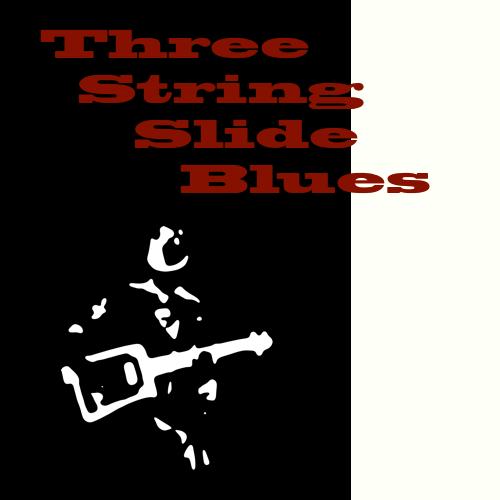
Suitable for intermediate and advanced players who want to know more about improvising and playing the blues. It's specifically for 3 string slide players although all of the concepts will be relevant to any musician, the song examples are demonstrated with a slide but you could play them with fretted guitars. Have a go.
In order to improvise well you need a wide range of skills, including sophisticated musicianship skills and a solid knowledge of music theory, you'll get all that here. Before you do though and to get you playing straight away I've split the course into two. The Bridging Course allows you to explore some important concepts by listening and copying me. Then when you hit the heavier stuff later it'll have some context because you'll have already put it into practice. It has to be practical.
The following outline will give you more of an idea.
The Bridging Course
If you can get around your instrument but have never learned any music theory and never tried to improvise or make your own music then here's where you start. The idea is to get you playing and applying some of these concepts early so that they'll be familiar when you come to study them later on. Most of these early lessons have backing tracks for you to play along with, there are more in the pipeline.
Rhythm |
| Right from the start and throughout the course there is a focus on rhythm and groove, about keeping it funky. Straight up there's a simple approach to rhythm playing and some basics such as accents, hitting the upbeats and the difference between straight and shuffle grooves. |
Rock 'n' Roll |
| So you can pick, you can follow the dots, you can find the backbeat, let's rock. |
Some Boogie |
| The previous lesson was in a straight feel, this one is a shuffle. You'll look more at developing a rhythmic groove and how to follow the dots to make riffs that sit right there in the pocket. |
Slow Blues |
| With a slow blues there's nowhere to hide. You've focused so far on rhythm playing and brought your slide in a little, now you can look some more at how to create and resolve tension in your blues, again by following the dots. |
One Chord Blues |
| This lesson introduces you to the important concept of repetition and variation in your soloing. On a one chord blues there's no progression to do that for you so you have to find ways to make your solos interesting. |
Some 12 bar solos |
| The next three lessons give you some solos to play. You'll start with a simple one, again following the dots, and gradually lift the bar as you progress. The course is about improvising and teaching you to play your own thing but before you get on to that it can help to look at how others before you have done the same thing. You'll see and hear the concepts that you're learning in action and, importantly make them happen yourself. |
Riffin' |
| The final lesson in the Bridging Course gives you a taste of what's to come. Rather than copying me note for note you'll learn strategies that you can take to any playing situation and come up with your own ideas. It doesn't happen automatically but it can be learned, you're about to prove that to yourself. |
The Blues Course
Lesson 1 - The 12 Bar Blues |
| It's time to take a whole new look at the 12 bar blues. You'll study some of its history and learn a few variations but more importantly you'll learn a new way of listening to these crucial chord changes. Soon you'll be using them to contruct interesting and original melodies, you'll need to hear how these changes work in order to do that. |
| The Performance Task for this lesson is Robert Johnson's Walkin' Blues, complete with video lesson, tab, standard notation and backing track. |
Lesson 2 - Grooves |
| You looked at Grooves in the Bridging Course, now you'll disect them a little further. You'll learn to identify and use syncopation, triplets and shuffle feels. You'll learn about dividing the beat and playing complex rhythms that fit into these grooves. You'll learn some important exercises to help you call on these beat sudivisions at will and use them in your improvising. |
| The Performance Task for this lesson is Muddy Waters' Mannish Boy, again with video lesson, tab, standard notation and backing track. |
Lesson 3 - Scales |
| There's no escaping them, now you'll learn to love them. These early lessons are about the basics and to progress from just following the dots you'll learn how to use major and minor pentatonic scales and the blues scale. You'll learn how notes from these scales interact with each other and with other scales and you'll be playing and making sense of them straight away. |
| The Performance Task for this lesson is Wille Dixon's Little Red Rooster, with video lesson, tab, standard notation and backing track |
Lesson 4 - Riffs |
| You know about grooves, you've got a few scales under your belt, you've learned some simple, effective approaches to riffin' in the Bridging Course, now you're ready to get serious with it. Your riffs need to fit into a groove and they need to make sense with a key or scale. Here you'll find strategies to make those things happen. |
| The Performance Task here will demonstrate the riffs for Stevie Ray Vaughan's Cold Shot, Muddy Waters' version of Rollin and Tumblin and Eric Clapton's version of Crossroads. You've got video lessons, tab and standard notation for all three and a very funky backing track for Crossroads. |
Lesson 5 - Other Blues Forms |
| Of course the 12 bar form is not the only way you can play a blues. Here you'll be introduced to standard 8 and 16 bar forms, in the process learning hundreds of new songs in one fell swoop. You'll also look at new improvisational approaches to these tunes that will develop your playing to a whole new level. |
| The Performance Task here is Big Bill Broonzy's 8 bar Key to the Highway, again with video lesson, tab, standard notation and a backing track. |
Lesson 6 - Playing Over Changes |
| Up until now you've focused on building grooves and using call and response, repetition and variation to develop your playing. Now you enter a whole other stratosphere. Learning to identify what happens harmonically as chords change and be able to adapt accordingly is the great skill of the improviser and the focus of this lesson. |
| The Performance Task is Stevie Ray Vaughan's Mary Had a Little Lamb, again with video lesson, tab, standard notation and a backing track. |
Lesson 7 - The Third |
| The third note of the scale, both major and minor, is a very important part of the Blues. Here you'll spend a whole lesson focusing on how to use it in your playing, both in constructing riffs and making complex lines that span chord changes. |
| The Performance Task for this lesson is T-Bone Walker's T-Bone Shuffle again with video lesson, tab, standard notation and a backing track. |
Lesson 8 - Thematic Development |
| As you wil have noticed this is no Mickey Mouse course, it's the real deal and here you'll learn concepts that the great composers, from J. S. Bach to Willie Dixon have used in there compositions and in there improvisations. By stating and developing a theme you'll learn how to build interesting solos that keep yourself and your listeners engaged. |
| The Performance Task for this lesson is nothing less than Freddie King's tour de force Hide Away. You'll learn an adaptation for 3 string slide of the entire piece with video lesson, tab and standard notation. |
Lesson 9 - Soloing through the chord change |
| In this lesson you'll learn some more advanced concepts for getting across a chord change. Devices such as voice leading, anticipation and chromaticism will become second nature. |
| The Performance Task here is not a new tune, instead I take you note for note through an improvised solo for Key to the Highway. Each of the Performance Tasks demonstrate an element of the lesson so to more fully grasp these advanced ideas you'll be putting them into practice in a blues context over an 8 bar tune with plenty of chord changes. |
Lesson 10 - The Turnaround |
| Again an important element of the Blues that gets its own lesson. It's late in the course because you'll need everything you've learned so far to create varied and unique turnarounds. Again you'll learn strategies for constructing your own. |
| The Performance Task for this lesson is another Wille Dixon classic Sittin' On Top of the World, complete with video lesson, tab and standard notation. |
Lesson 11 - Structuring an Improvisation |
| Toward the end of the course it's time to wrap up. You'll learn to combine everything that you've learned already to structure an improvisation. You'll also closely examine , and learn to play an improvised solo from a live performance of mine a few years back. An important part of this lesson is learning to read the rhythmic elements of standard notation that are missing from TAB. This will help you with this lesson, with the transcriptions that are still in the pipeline and with the mountain of written music already out there. |
| Again no new tunes here but a close examination of my improvised solo on Robert Johnson's Walkin' Blues, again with video lesson, tab and standard notation. |
Lesson 12 - Wrappin' It Up |
| It's the end of the course but not the end of you're learning so it's time to assess where you're at. This lesson revisits the earlier ones on groove and harmony to put them into the context of the rest of the course. It also has a closer look at arpeggios and how chord tones relate with each other so that you can identify any gaps in your knowledge and know what to revisit. Nothing is left to chance. |
| The final Performance Task is Robert Johnson's masterpiece Terraplane Blues, again with video lesson, tab and standard notation. |
